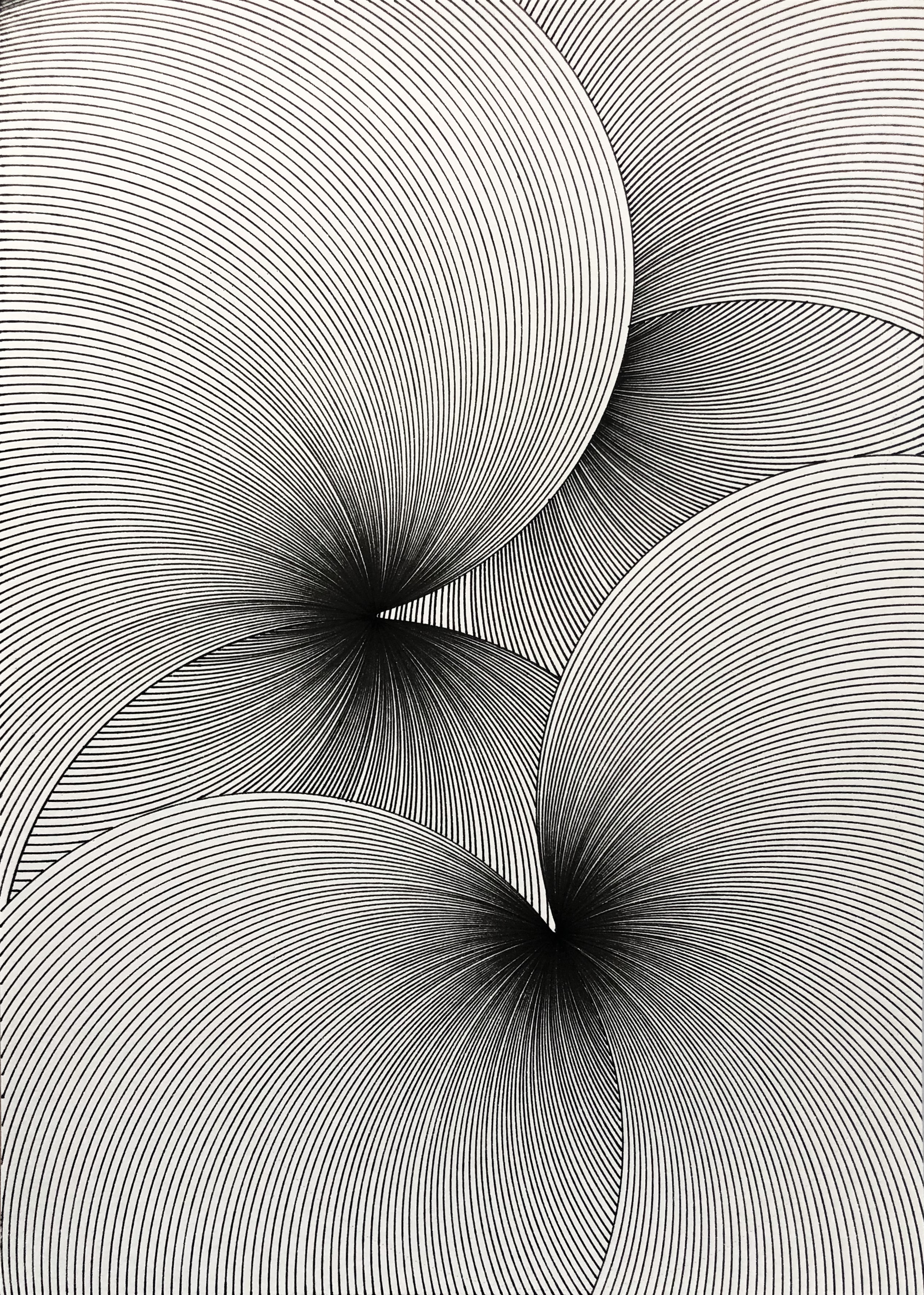RHODES represents numerous artists who express their creativity though vibrant palettes and experimental colour combinations. However, some artists work in completely the opposite direction, creating abstract artworks with only one or two colours in use.
Despite the contemporary feel, the practice of using only one single colour and medium goes way back. In the 15th century, artists were producing painted studies in black and white, challenging themselves to recreate a realistic appearance of stone sculptures on paper. However, the abstract monochromatic paintings as they’re generally understood today began in the early 20th century with movements such as Suprematism and Constructivism, led by Malevich and Rodchenko. Whether the intention was to dismantle the typical assumptions and expectations associated with Fine Art and painting or using a single colour as a sort of meditation on the essence of art, their approach was perceived as a radical one. Later, with the emergence of the Minimalist movement in 60s New York, artists such as Sol LeWitt, Jo Baer and Carl Andre focused on the simplicity, with the straightforward geometric forms and neutral colour palettes.
Such seemingly simple combination of abstract shapes and strict colour-palette has resulted in pieces that look and feel modern even now, inspiring many contemporary artists to follow the steps and limit their own palettes for a variety of reasons. Today, we would like to take a closer look at two of the artists represented by RHODES – an American abstractionist Cat Spilman and contemporary German artist Thomas Stempel – and discuss the choice of a minimal, two-tone art practice and its possibilities.

Growing up in southern Germany, Thomas Stempel was strongly influenced aesthetically by its landscape and natural features, such as shadows of the trees, rock formations and stones intricately shaped and rounded by the river. These natural shapes and form became the starting point for his drawings, made entirely by hand with only a pen and compass. Another source of great inspiration for Stempel are the cities and man-made objects within them. With the detail-focused approach present in both his art practice and everyday life, the artist deconstructs forms within the cities with its structures and textures of the man-made objects which he encounters through the day.

The minimalistic approach to medium and colour palette allows Stempel to focus solely on shape and form, constantly perfecting his drawing skills. This, combined with his remarkably meticulous attention towards details, creates a mesmerising piece with an almost kaleidoscopic aesthetic to them, evoking a sense of continuous movement in the audience, despite being static. Precisely the limited colour palette and abstract style helps every new observer establish a very personal connection with Stempel’s artworks, whether through recalling a memory, a feeling of a texture or recognising a familiar object within the composition.
Learn more about Thomas Stempel

Unique Signed Original
For contemporary abstract artist Cat Spilman, the decision to narrow the palette down to two colors that work well together was also a conscious one, driven by the desire to concentrate primarily on the composition and energy of the artwork. Having come from a career as a Scenic Artist for film and television, the house paint was a natural choice for Spilman, due to both familiarity with the medium and the love for the beautiful textures and indicate patterns the thick paint provides.

In contrast to Stempel, Spilman’s works are never pre-planned. Instead, they pour out of her directly onto the canvas, fluid and raw. Such a cathartic process not only produces art that consists of pure energy and creativity, but is also something that helps Cat to understand her emotions and feelings better. The result – a raw self-exploration, an abstract self-portrait – makes every piece completely unique, despite the reoccurring use of the two contrasting colours. Moreover, the familiarity with the colour choice and the medium allows the artists to prioritise the artworks’ themes, addressing topics such as separation, belonging, modern feminism and motherhood.

Unique Signed Original
Ultimately, both artists demonstrate the power of simplicity and abstraction in conveying emotions and ideas, as well as putting an emphasis on the perfecting their artistic skills. Such an approach to medium and colour palette enables a deeper focus on the core elements of works, offering viewers a personal and immersive experience. Through their distinct styles, Stempel and Spilman contribute to the ongoing dialogue surrounding the possibilities of limited colour palette and abstract art continuing the minimalistic traditions in the contemporary art world.
For more information please email info@rhodescontemporaryart.com


